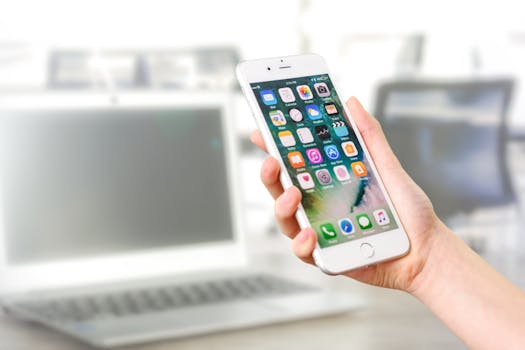
Struggling to juggle multiple apps on your Android device? Discover the power of split screen! This simple trick can dramatically boost your productivity by allowing you to use two apps simultaneously, eliminating constant app switching.
Android Split Screen: Double Your Productivity Instantly!
Struggling to juggle multiple apps on your Android device? Discover the power of split screen! This simple trick can dramatically boost your productivity by allowing you to use two apps simultaneously, eliminating constant app switching. Imagine reading an email while simultaneously checking your calendar, or researching a topic online while taking notes – all on the same screen. Let's dive into how you can master this game-changing feature.
Why Use Android Split Screen?
Split screen functionality on Android devices offers a wealth of benefits, making it an indispensable tool for anyone looking to maximize their efficiency and multitasking capabilities. Here’s a breakdown of why you should be using it:
- Increased Productivity: The most obvious benefit is the ability to do more in less time. No more constantly switching between apps; you can work on multiple tasks simultaneously.
- Improved Workflow: Seamlessly integrate different workflows. For example, you can watch a tutorial video while practicing the steps in another app.
- Enhanced Research: Compare information from multiple sources side-by-side. This is especially useful for students, researchers, and anyone who needs to analyze data.
- Better Communication: Participate in video calls while simultaneously taking notes or sharing documents.
- Simplified Entertainment: Watch a video while browsing social media or chatting with friends.
How to Activate Split Screen on Android
Activating split screen on your Android device is generally straightforward, but the exact steps may vary slightly depending on your Android version and device manufacturer. Here are the most common methods:
Method 1: Using the Recent Apps Button
This is the most universal method and works on most Android devices.
1. Open the Apps: Launch the two apps you want to use in split screen.
2. Access Recent Apps: Tap the recent apps button (usually a square, three lines, or a gesture swipe up from the bottom). This will display all your recently opened apps.
3. Initiate Split Screen:
- Android 7-8: Long-press the app icon at the top of one of the app previews. A menu will appear; select "Split screen."
- Android 9 and Later: Tap the app icon above the app preview. A menu will appear; select "Split screen."
4. Select the Second App: The first app will now be docked to the top or bottom of the screen. Choose the second app from the list of recent apps, or tap the app icon to open a different app.
Method 2: Using Gestures (Android 9 and Later)
Some Android devices offer gesture-based navigation. If you're using gestures, here's how to activate split screen:
1. Swipe Up and Hold: Swipe up from the bottom of the screen and hold to access the recent apps screen.
2. Tap and Hold: Tap and hold the icon of the first app you want to use in split screen.
3. Select Split Screen: Choose the "Split screen" option from the menu.
4. Choose the Second App: Select the second app from your recent apps or open a new one.
Method 3: From Within an App (Android 12 and Later)
Android 12 introduced an even easier way to enter split screen directly from within an app.
1. Swipe Up to Access Recent Apps: Swipe up from the bottom of the screen to access the recent apps overview.
2. Tap the App Icon: Tap the icon of the app you want to use in split screen.
3. Select Split Screen: Choose the "Split screen" option from the menu.
4. Choose the Second App: Select the second app from the list of recently used apps or open a new app.
Tips for Maximizing Your Split Screen Experience
Here are a few tips to help you get the most out of Android's split screen feature:
- Adjust the Divider: You can adjust the size of each app window by dragging the divider between them. This allows you to prioritize one app over the other.
- Switch App Positions: Some devices allow you to switch the positions of the apps by tapping a small button on the divider. This can be useful for optimizing your view.
- Use App Pairs: On some Android versions, you can create app pairs, which allow you to launch two apps in split screen with a single tap. This is great for frequently used app combinations.
- Consider App Compatibility: Not all apps support split screen. If an app doesn't support it, the "Split screen" option will be greyed out or unavailable.
- Use a Tablet for Optimal Viewing: Split screen is particularly useful on tablets, as the larger screen size provides more space for each app.
Troubleshooting Common Split Screen Issues
While split screen is generally reliable, you might encounter some issues. Here are a few common problems and their solutions:
- Split Screen Option Missing: If you don't see the split screen option, make sure the app supports split screen and that you're using a compatible Android version.
- Apps Crashing: Sometimes, split screen can cause apps to crash, especially if they are resource-intensive. Try closing other apps and restarting your device.
- Lagging Performance: If you experience lagging performance, try reducing the number of apps running in the background. Also, consider clearing your device's cache.
Conclusion
Android's split screen feature is a powerful tool that can significantly boost your productivity and enhance your multitasking capabilities. By mastering the techniques outlined in this guide, you can unlock the full potential of your Android device and streamline your workflow. So, embrace the power of split screen and start getting more done today!
